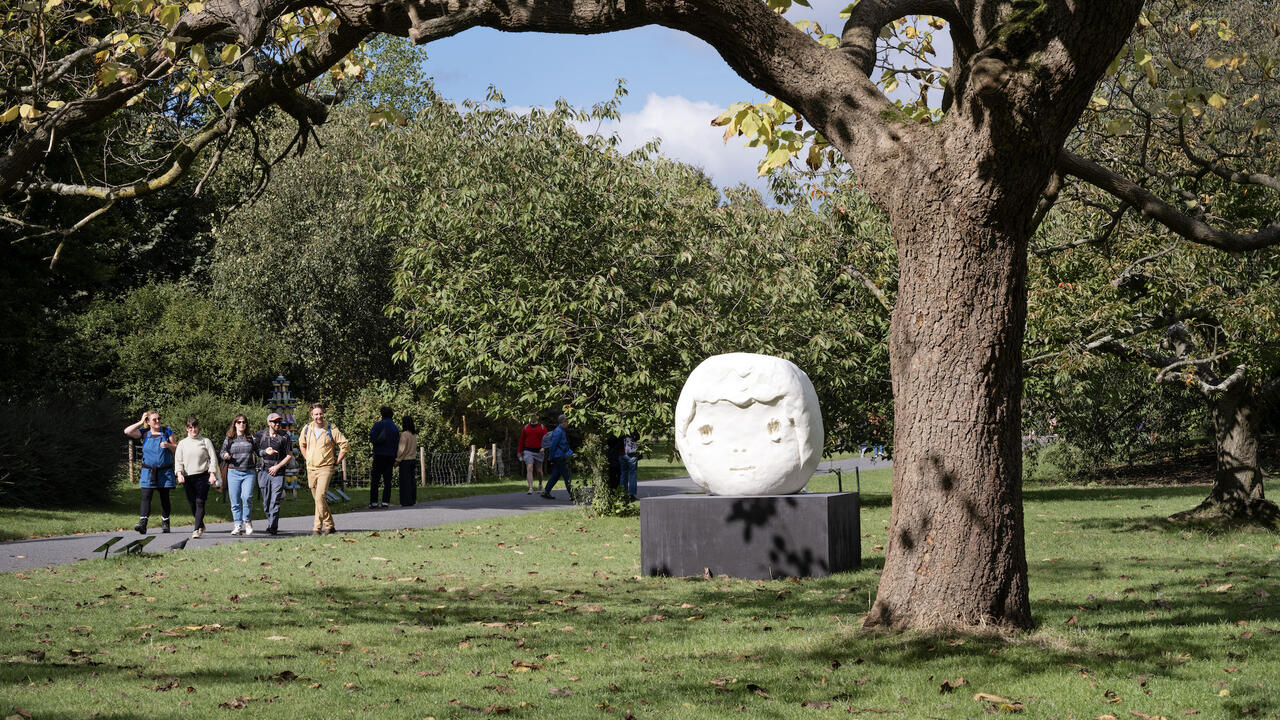U-TURN Quadrennial for Contemporary Art
Various venues, Copenhagen, Denmark
Various venues, Copenhagen, Denmark

A group of independent curators – Charlotte Bagger Brandt, Solvej Helweg Ovesen and Judith Schwarzbart – won a competition to devise and mount the first instalment of the U-TURN Quadrennial in Copenhagen, an initiative conceived and funded by the Danish Arts Council. The curators aimed to address the institutional neglect suffered by several generations of Danish artists and to effect the U-turn of the title, suggesting a repressed ‘before’ and raised expectations for a dramatically changed ‘after’. Parts of the Danish art world is in fact receiving more national media exposure than ever before, but it is typically art that can hold its ground on a booming commercial art scene and in an expanding experience economy. Therefore, as well as introducing new artists, this first quadrennial needed to show reflexivity in curating and sensitivity to art’s cultural location.
Five hundred days before the official opening, the curators began setting up residencies, organizing talks programmes and conferences, and initiating the bilingual Danish/English art magazine SUM. Far from being marketable as events, such structural efforts and long-term ‘embedded’ initiatives could potentially generate lasting effects within an art scene in need of objectives that surpass commercial and media expectations.
Followed by the somewhat ostentatiously right-on tag line ‘replace fear of the unknown with curiosity’, the quadrennial’s fourfold thematic umbrella addressed the city in transformation, performativity, cultural translation and the new Europe. A fan of exhibitions, screenings, performances and site-specific projects, involving some 65 artists and groups, unfolded in Copenhagen and beyond. The group show in the Carlsberg brewery and a solo exhibition by Jesper Just at Nikolaj Copenhagen Contemporary Art Center were the main events, but a large group show at the Stege cultural centre in Møn also drew attention. This was a historical exhibition charting the Fluxus movement’s influence on contemporary art – as if the curators set out not only to turn around contemporary art but also to rectify the fact that there is no museum of modern art in Denmark that extensively documents the national history of the (neo-)avant-gardes.
Inside the group show installed in the former Carlsberg brewery, viewers were greeted by large new productions by Kirstine Roepstorff, Elmgreen & Dragset and John Kørner, the latter two dealing in iconic ways with Danish identity issues. Less spectacular was an installation by Chto delat? (What is to be done?), the Russian collaborative team, in which a screening of their cabaret Perestroyka Songspiel: Victory over the Coup and the video What’s Next after What’s Next? (both 2008) traced the involvement of Danish grass roots movements during the perestroika era in the USSR. Pia Rönicke’s collaboration with the Kurdish author and journalist Zeynel Abidin Kizilyaprak, the video Facing: a Usual Story from a Nameless Country (2008), which detailed Kizilyaprak’s political imprisonment, filled out the blind spot in Turkish history books – the language, history and culture of the Kurds. In Stolen History (2008) the Romanian artist Daniel Knorr intervened in Copenhagen’s public spaces by putting balaclavas on the heads of historical sculptures – an activist gesture and an iconic detournement – thus robbing kings and bishops of their stature by giving them the appearance of terrorists. The intervention lasted just long enough to be documented before police and other authorities pressured the organizers to remove the balaclavas.
The inclusion of Just’s solo show alongside the group exhibition was a structural peculiarity that, in fact, modified U-TURN’s content. This is not to detract from the merits of Just’s work: the problem would have been the same for any artist given isolated significance in such a context, with its intentions of a political and ethical challenge to dominant modes of discourse and display.
Perhaps necessarily, but also somehow in spite of itself, U-TURN revolved around various manifestations of the national, from the dialectic with the scene’s institutional negligence to the introduction of young local artists and, more broadly, Danish xenophobia. But national ideology is pervasive and insidious exactly because it refuses to be turned around: the name and unity of the nation forces its subjects to return to it and re-affirm it again and again. In this respect it is ambiguous whether U-TURN was a turner of, or was being turned by, the issues it identified. In any case, the hardest – and most important – thing U-TURN pulled off was its vast scale, its conscientious build-up phase and its compilation of many fine works. All of which served to prove that there is a new institution in town that intends to make its voice heard in the future.
























